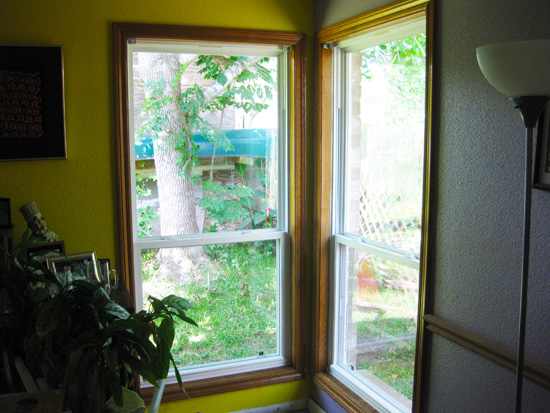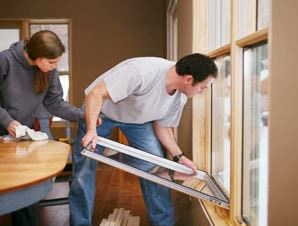Green Home Improvements that Increase Energy Efficiency
HVAC, insulation, energy-efficient windows, and more
Copyright © 2013 Jayla Barnsen; all Rights Reserved; content may not be copied, rewritten, or republished without written permission; Posted December 11, 2013
.


It’s important to protect the environment—and to save money. How can you do both, though? For the environmentally conscious, there are many ways to save on energy costs while still remaining environmentally friendly.
Use Nature
One of the easiest is to take advantage of nature. Open your windows in such a way that it creates airflow through your home. This means you do not need to run the air conditioner as much to keep the house at a comfortable temperature.
It is also important to change your HVAC air filter on a monthly basis, regardless of season. This will ensure that not only do you over-tax the efficiency of your system, but working it less will extend its life.
Another option is to plant shade trees, especially on the side of your home that receives the hottest afternoon sun. This approach is part of an energy-conservation policy called passive energy concepts. Although with this approach the payoff takes significantly longer, it is worth it in the long run.A more expedient (and supplemental) choice is to hire custom awning builders to create a shelter to shade a side of your house. What room do you spend the most time in? For most families, this is the living room.
By building an awning against the side where the living room is located, it will shade that portion of the house and stop it from soaking up so much heat during the day. This leads to lower overall energy costs.
Heating Things up
As for wintertime heating, adding green insulation is a good, economical choice. It is easy to add it to the attic space and a contractor can blow it into your exterior walls in a minimally intrusive manner.
Consider renovating your HVAC unit so that it is more energy efficient; not only will you save money, but you use less power. Grab a can of caulk and plug up any leaks around windows or chimneys in your home to prevent heat from escaping and water from entering.
Home Maintenance Tips
Remember to keep your thermostat set to 68F in winter and 78F in summer. This reduces the effort exerted by the system to homogenize the temperature throughout the house.
Important tip: here’s something homeowners almost never do: troubleshoot and fix your thermostat. It seems everybody just trusts that the reading is correct.
 Replacing old windows with energy-efficient double-paned windows preserves both the warm and cool air in your home, as well—if your house has its original contractor-grade windows, it might be time for an upgrade.
Replacing old windows with energy-efficient double-paned windows preserves both the warm and cool air in your home, as well—if your house has its original contractor-grade windows, it might be time for an upgrade.
Single panes of glass experience tremendous thermal transfer and make it impossible to keep a temperature stabilized. The same applies to non-insulated doors. Ensure that your doors’ hinge areas are secure and close all the way making contact with the flexible seal; if not, the cracks around the sides of the door might be letting air out.
But if you can’t afford new windows or an awning at this point, consider installing cellular shades. They are very inexpensive and effectively add a layer of insulation to the inside of your windows.
Protecting the environment is a matter of conservation, and so is saving energy—by conserving the temperature of your home, whether keeping it cool in summer or warm in winter, you use less power trying to stay comfortable. If all else fails, remember that you can cover up with a blanket and use no energy at all.
More Green and Frugal Living Articles
- What to Look for in Energy Efficient Replacement Windows
- 3 Ways You Can Lesson Your Environmental Impact
- How to Install a Radiant Barrier in Your Attic
- Ten Top Tips for a Greener Home
Website © 2011 KSmith Media, LLC; all rights reserved; content may not be copied, rewritten, or republished without written permission; Webmaster’s Google profile

